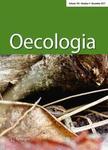版权所有:内蒙古大学图书馆 技术提供:维普资讯• 智图
内蒙古自治区呼和浩特市赛罕区大学西街235号 邮编: 010021

作者机构:Zhejiang Normal Univ Inst Ecol Jinhua 321004 Peoples R China Martin Luther Univ Halle Wittenberg Inst Biol Geobot & Bot Garden Kirchtor 1 D-06108 Halle Germany German Ctr Integrat Biodivers Res iDiv Deutsch Pl 5e Deutsch Pl 5e D-04103 Leipzig Germany Leuphana Univ Luneburg Inst Ecol Scharnhorststr 1 D-21335 Luneburg Germany
出 版 物:《OECOLOGIA》 (生态学)
年 卷 期:2017年第183卷第2期
页 面:455-467页
核心收录:
学科分类:0710[理学-生物学] 07[理学] 09[农学] 0713[理学-生态学]
基 金:BEF-China consortium German Research Foundation [DFG FOR 891/1, 891/2] Sino-German Centre for Research Promotion in Beijing [GZ 524, 592, 698, 699, 785, 970, 1020] National Natural Science Foundation of China
主 题:Biodiversity and ecosystem function Host specialization Plant species richness Sustainable forest management Trophic interactions
摘 要:Stand diversification is considered a promising management approach to increasing the multifunctionality and ecological stability of forests. However, how tree diversity affects higher trophic levels and their role in regulating forest functioning is not well explored particularly for (sub)tropical regions. We analyzed the effects of tree species richness, community composition, and functional diversity on the abundance, species richness, and beta diversity of important functional groups of herbivores and predators in a large-scale forest biodiversity experiment in south-east China. Tree species richness promoted the abundance, but not the species richness, of the dominant, generalist herbivores (especially, adult leaf chewers), probably through diet mixing effects. In contrast, tree richness did not affect the abundance of more specialized herbivores (larval leaf chewers, sap suckers) or predators (web and hunting spiders), and only increased the species richness of larval chewers. Leaf chemical diversity was unrelated to the arthropod data, and leaf morphological diversity only positively affected oligophagous herbivore and hunting spider abundance. However, richness and abundance of all arthropods showed relationships with community-weighted leaf trait means (CWM). The effects of trait diversity and CWMs probably reflect specific nutritional or habitat requirements. This is supported by the strong effects of tree species composition and CWMs on herbivore and spider beta diversity. Although specialized herbivores are generally assumed to determine herbivore effects in species-rich forests, our study suggests that generalist herbivores can be crucial for trophic interactions. Our results indicate that promoting pest control through stand diversification might require a stronger focus on identifying the best-performing tree species mixtures.